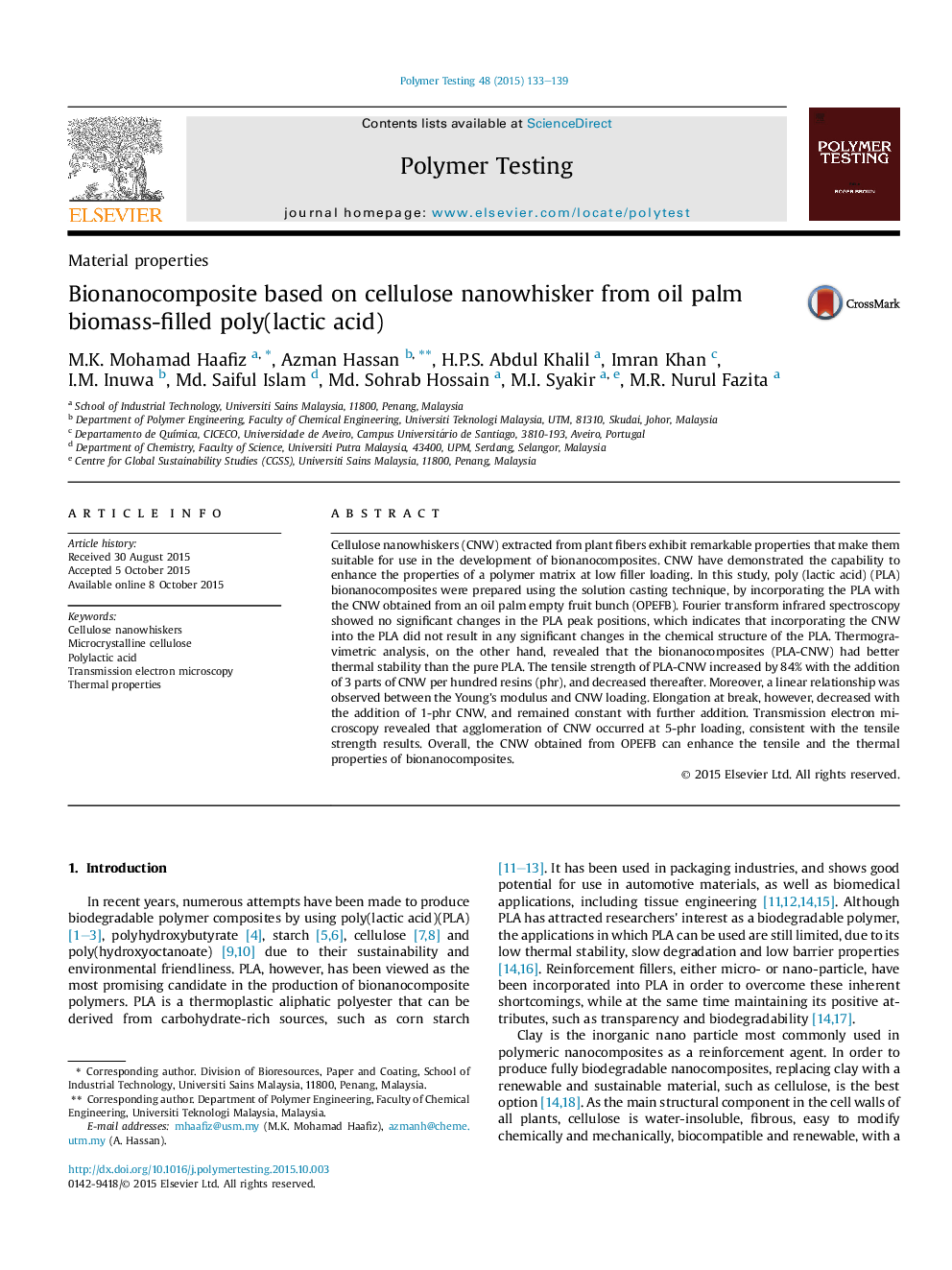| Article ID | Journal | Published Year | Pages | File Type |
|---|---|---|---|---|
| 5205953 | Polymer Testing | 2015 | 7 Pages |
Abstract
Cellulose nanowhiskers (CNW) extracted from plant fibers exhibit remarkable properties that make them suitable for use in the development of bionanocomposites. CNW have demonstrated the capability to enhance the properties of a polymer matrix at low filler loading. In this study, poly (lactic acid) (PLA) bionanocomposites were prepared using the solution casting technique, by incorporating the PLA with the CNW obtained from an oil palm empty fruit bunch (OPEFB). Fourier transform infrared spectroscopy showed no significant changes in the PLA peak positions, which indicates that incorporating the CNW into the PLA did not result in any significant changes in the chemical structure of the PLA. Thermogravimetric analysis, on the other hand, revealed that the bionanocomposites (PLA-CNW) had better thermal stability than the pure PLA. The tensile strength of PLA-CNW increased by 84% with the addition of 3 parts of CNW per hundred resins (phr), and decreased thereafter. Moreover, a linear relationship was observed between the Young's modulus and CNW loading. Elongation at break, however, decreased with the addition of 1-phr CNW, and remained constant with further addition. Transmission electron microscopy revealed that agglomeration of CNW occurred at 5-phr loading, consistent with the tensile strength results. Overall, the CNW obtained from OPEFB can enhance the tensile and the thermal properties of bionanocomposites.
Keywords
Related Topics
Physical Sciences and Engineering
Chemistry
Organic Chemistry
Authors
M.K. Mohamad Haafiz, Azman Hassan, H.P.S. Abdul Khalil, Imran Khan, I.M. Inuwa, Md. Saiful Islam, Md. Sohrab Hossain, M.I. Syakir, M.R. Nurul Fazita,
